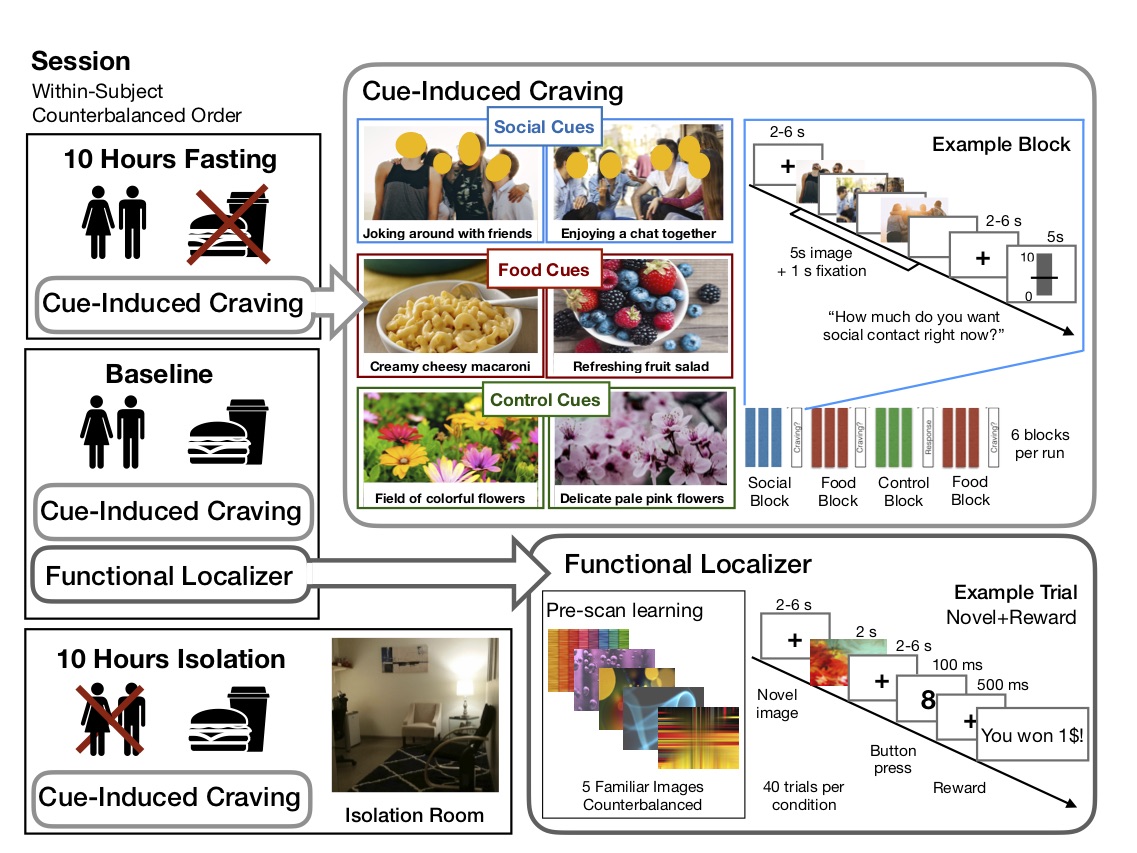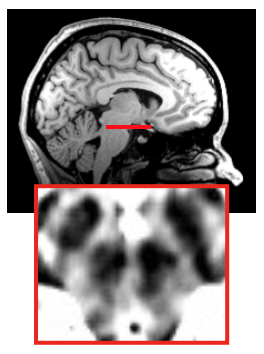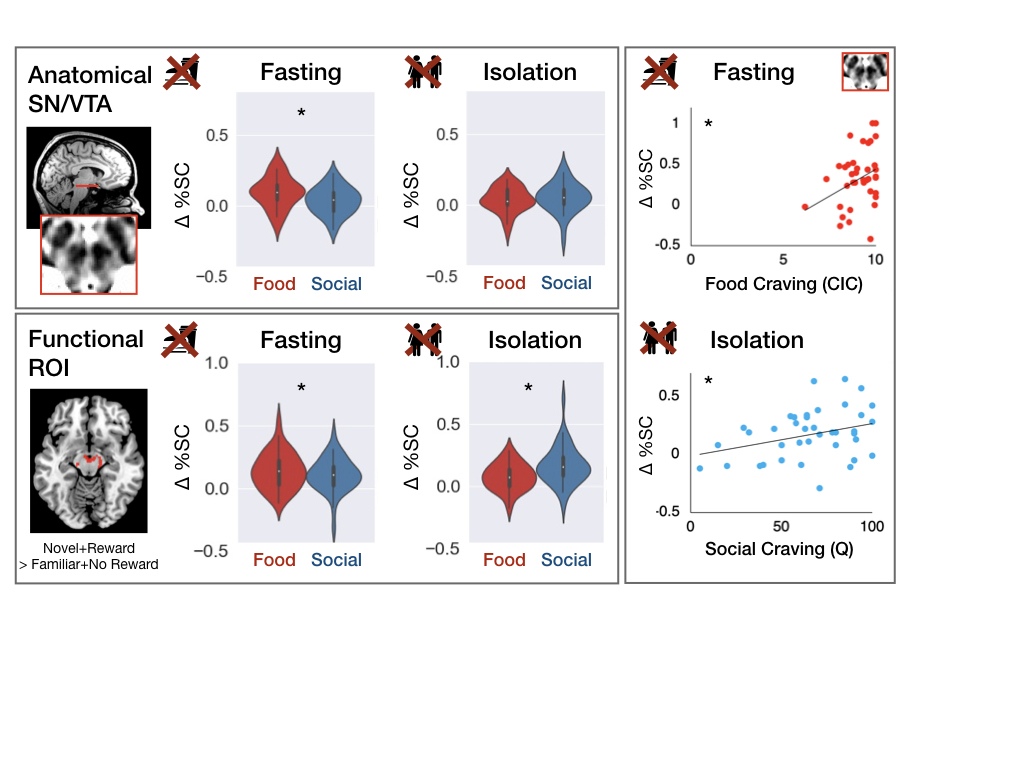We posted a preprint today: “The need to connect: Acute social isolation causes neural craving responses similar to hunger.” Lead author @livia_tomova.
https://www.biorxiv.org/content/10.1101/2020.03.25.006643v1
A">https://www.biorxiv.org/content/1... thread on what we did, what we found, and the story behind it.
1/25
https://www.biorxiv.org/content/10.1101/2020.03.25.006643v1
A">https://www.biorxiv.org/content/1... thread on what we did, what we found, and the story behind it.
1/25
More authors: Kim Wang, Todd Thompson, Gillian Matthews @ga_matthews,, Atsushi Takahashi, Kay Tye @kaymtye. Thanks, Team!
First, what we did. We had 40 people — all healthy, socially-connected adults — each spend one day fasting, to make them crave food; and another day socially isolated, to see if they’d crave social contact.
At the end of each day, we scanned their brains while they looked at pictures (from @pexels) of their favourite foods and social activities. 4/25
We specifically measured brain activity in the substantia nigra, a midbrain dopaminergic region that is involved in craving food, when hungry, or drugs, when addicted. 5/25
Second, what we found. The title is a spoiler for the results of course: we found similar midbrain activity in response to food cues after fasting and social cues after isolation.
Also, people who reported feeling more craving showed more activity in midbrain — both for food craving and for social craving. 7/25
And, people who were chronically lonely before the study started showed generally attenuated midbrain responses: to social cues, but also to food cues. 8/25
Third, the story. This week, when we submitted the preprint, “social isolation” is suddenly relevant and timely. But we have been working on this project for over three years.
9/25
9/25
In 2016, @kaymtye and @ga_matthews reported that acute social isolation leads to an aversive loneliness-like state, mediated by midbrain dopaminergic neurons, that motivates seeking social contact. In mice.
https://www.sciencedirect.com/science/article/pii/S0092867415017043">https://www.sciencedirect.com/science/a...
10/25
https://www.sciencedirect.com/science/article/pii/S0092867415017043">https://www.sciencedirect.com/science/a...
10/25
Might acute isolation have a similar effect on humans? @livia_tomova was inspired by @ga_matthews’s paper, and pitched to me the idea of trying to replicate it in humans.
11/25
11/25
For lots of reasons, results might not be similar in humans and mice. One day of isolation is not that long for a human. And being objectively alone doesn& #39;t always mean feeling subjectively isolated; when people chose solitude it can be restful and rejuvenating. @thuyvytnguyen
And when the mice were isolated, they had no way of knowing when it would end. Whereas we, for ethical reasons, had to tell participants how long the isolation would be when they consented to the study.
13/25
13/25
(Many humans& #39; current isolation is more like the original study: long and unpredictable. Corona virus did not get IRB approval for its intervention on our social lives).
14/25
14/25
Also, the midbrain is composed of tiny structures that are hard to localize, near a sinus that causes a big distortion; and fMRI doesn’t measure dopamine; and lots of technical challenges like that.
15/25
15/25
Mostly though, what seemed daunting was the scope of the challenge. We would need to scan 40 people, each three times. Every scan happened at 7 pm. That’s 120 nights @livia_tomova spent in the scanner room, a kind of isolation experiment in itself.
The pictures of favourite foods and activities were individually tailored for each individual participant. Hundreds of hours flipping through databases of open source images. THANKS so much to the undergraduate researchers who did hours and hours of this! 17/25
All of this was high risk. A totally new direction for my lab. Thanks so much to @SFARIorg and @NIH for supporting us to do this study! 18/25
Why did it seem worth the risk? @livia_tomova and I had some reasons. We thought it would be an interesting baseline for future studies. Like: would the effects of acute isolation be different in younger (adolescent) or older (elderly) people? 19/25
And: would the effects of isolation be completely eliminated if participants could use social media? What if participants could view social media (passive use), but not post or interact (active use)? 20/25
It could be useful to know how similar mice are to men (and women, of course). Because many labs study social motivation in mice, with an eye towards eventually improving human mental health. 21/25
Anyway, all of this is to say: we did this study because we were curious. Basic science. Increasing the awesome.
https://www.youtube.com/watch?v=IOKRR9sYlzc
22/25">https://www.youtube.com/watch...
https://www.youtube.com/watch?v=IOKRR9sYlzc
22/25">https://www.youtube.com/watch...
In January, when we started writing the paper, I was thrilled with the results but worried that it might be on a niche topic. Why would a healthy, socially-connected, adult be externally mandated into isolation?
23/25
23/25
And then… it became suddenly surprisingly relevant. To my life and everyone else’s. Writing this paper over the last week, while home with my kids, has actually been a source of sanity. A way to channel energy. I’m very grateful to have had this work to do, this week.
24/25
24/25
So, that’s how we come to be submitting a preprint about social isolation this week.
Note: it’s not peer reviewed yet; this is our preliminary version. I’m really grateful @biorxivpreprint makes it possible to share our results immediately while they are fresh.
Fin.
Note: it’s not peer reviewed yet; this is our preliminary version. I’m really grateful @biorxivpreprint makes it possible to share our results immediately while they are fresh.
Fin.

 Read on Twitter
Read on Twitter




